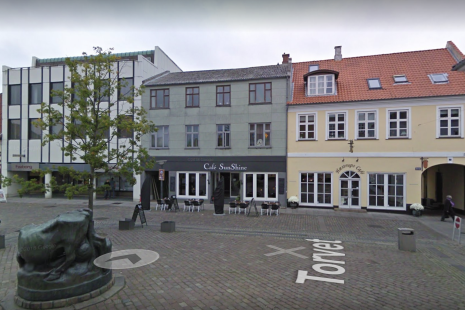The Danish-German artist Christian Lemmerz is best known as a sculptor, but drawing has always been an important part of his work.
“I have always thought of myself more as a draftsman than a sculptor. It suits me better, as in drawing I can take the full risk here and now. Sculpture requires planning.”
Christian Lemmerz
The exhibition’s drawings are violent. The strokes are large, and the pencil is pressed against the paper with a force that in some places tears the paper.
“For me, drawing is a large projection board on which I can project ideas or simply achieve a bodily fluctuation, get a bodily sensation out. The beauty of drawing is that it is a rhythm and an act of vision that you directly translate to the body, to the arm , which meets the paper.”
Christian Lemmerz
About the artist
Christian Lemmerz (b. 1959) was born in Kahlsruhe in Germany. He is classically trained at the art academy in Carrara, Italy, where he learned to work marble in the sculptural tradition of antiquity and the Renaissance, and he completed his education at the Academy of Fine Arts in Copenhagen, where he became part of the experimental art environment of the 1980s with “De Unge Vilde ” and “The worst workshop”.
Christian Lemmerz became known to the public when he exhibited rotting pig carcasses at the Esbjerg Art Museum, but later the artist returned to his classic starting point when he exhibited sculptures in Carrara marble at ARoS in 2010. Only upon closer inspection did the visitors see that the white sculpture’s bodies were disfigured and mutilated by war, abuse and terror.
Christian Lemmerz’s works revolve around death, doom and anxiety. In other words, they are about human existence. This does not exclude the beauty, not even in Christian Lemmerz’s drawings, which are now being exhibited in Faaborg. “Drawing gives absolute freedom,” writes Christian Lemmerz in his large book “Disegno” about his drawing practice. Drawing is a space for experimentation, where the artist can work faster and more freely than in sculpture.
The exhibition’s drawings are sketches for sculptures, form experiments and small works in their own right. Most of the drawings consist of human bodies stopped in mid-movement such as during a fight or dance. Others are missing heads and arms. The sketches show people in their most raw and unpolished forms, but the drawings also contain figures that are more reminiscent of the artist’s classical starting point.
The artist’s sculptures and drawings can be found in a number of art museums, e.g. at the Statens Museum for Art, ARoS and Ny Carlsberg Glyptotek.
“For me, the drawing is a reflection, whereas the sculpture is a conclusion. And where as an artist I would prefer to disappear behind a sculpture, as a person I would prefer to be present in the drawing.”
Free admission





